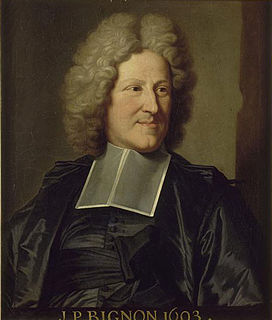JEAN-PAUL BIGNON
Jean-Paul Bignon (1662-1743), often called Abbé de Bignon, was a French scholar and writer, who acted as a patron of Antoine Galland. Bignon was born in Paris and was educated at the Collège d’Harcourt and the seminary Saint-Magloire, where he was ordained as a priest in 1691. In 1693 he was nominated abbot of Saint-Quentin-en-l’Isle and preacher of Louis XIV. In the same year he became a member of the Académie Francaise and 1699 he became an honorary member of the Académie des Sciences, followed by the membership of the Académie Royale des Inscriptions et Belles-Lettres in 1701 and the editorship of the scholarly journal Journal des savants (1705-1714). In 1718 he was appointed librarian of the king, at that time the largest library in Europe, which he thoroughly re-organized to accommodate to modern scholarly requirements.
The fragments:
Abbé de Bignon is intimately connected to the European history of the Thousand and one nights through his friendship with and patronage of Antoine Galland, the first European translator of the Nights. He supported (and probably arranged) Galland’s membership of the Académie des Belles-Lettres et des Inscriptions and later his appointment to the chair of Arabic language at the Collège de France in 1709. Bignon commissioned Galland to make a new translation of the Qur’an and Galland offered all his publication to his patron before publication. Galland and Bignon also cooperated in their correspondence with foreign and French scholars in the Republic of Letters.
Bignon’s novel Les aventures d’Abdalla, fils d’Hanif was published in 1712-1714 in two parts under the pseudonym Sandisson. The work was left incomplete; it was completed by Colson and published in 1775. The story is about Abdalla, who receives the assignment to go in search of a rejuvenating source on the island of Borico. On the way Abdalla meets his fellow traveller Almoraddin. They rescue some Indian ladies and visit a Persian lady who tells them stories. A peculiar story is about a visit to ‘Topsy-turvy Island’ where everything is the opposite of earthly phenomena. It is ruled by fairies, who perform strange occult rituals. The novel shows a combination of information from travelogues, occult practices and narrative settings and forms taken from the Thousand and one nights, and thereby foreshadows the components of the genre of the Oriental tale. Its purport seems to be to investigate various forms of credibility and representations of reality, linked to religion and narration.

Sources/references:
Simone Balayé, La Bibliothèque Nationale des origines à 1800, Droz, Genève 1988.
Frédéric Bauden/ Richard Waller (eds.), Le journal d’Antoine Galland (1646-1715), 4 vols., Peeters, Leuven etc. 2011-2016
Mohamed Abdel-Halim. Antoine Galland; sa vie et son oeuvre, A.G. Nizet, Paris 1964.
Weblinks:
http://viaf.org/viaf/29581678 (Ficier d’Autorité Virtuel)
http://isni.org/isni/0000000110493388 (International Standard Name Identifier)
http://catalogue.bnf.fr/ark:/12148/cb12202062t (Bibliothèque de France)
http://www.idref.fr/030645565 (Système Universitaire de Documentation)
http://id.loc.gov/authorities/nr91012719 (Library of Congress)
http://www.academie-francaise.fr/les-immortels/jean-paul-bignon?fauteuil=20&election=16-05-1693 (Académie Francaise)